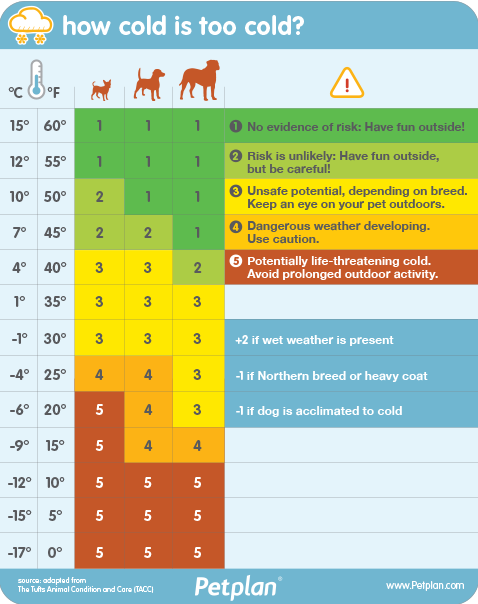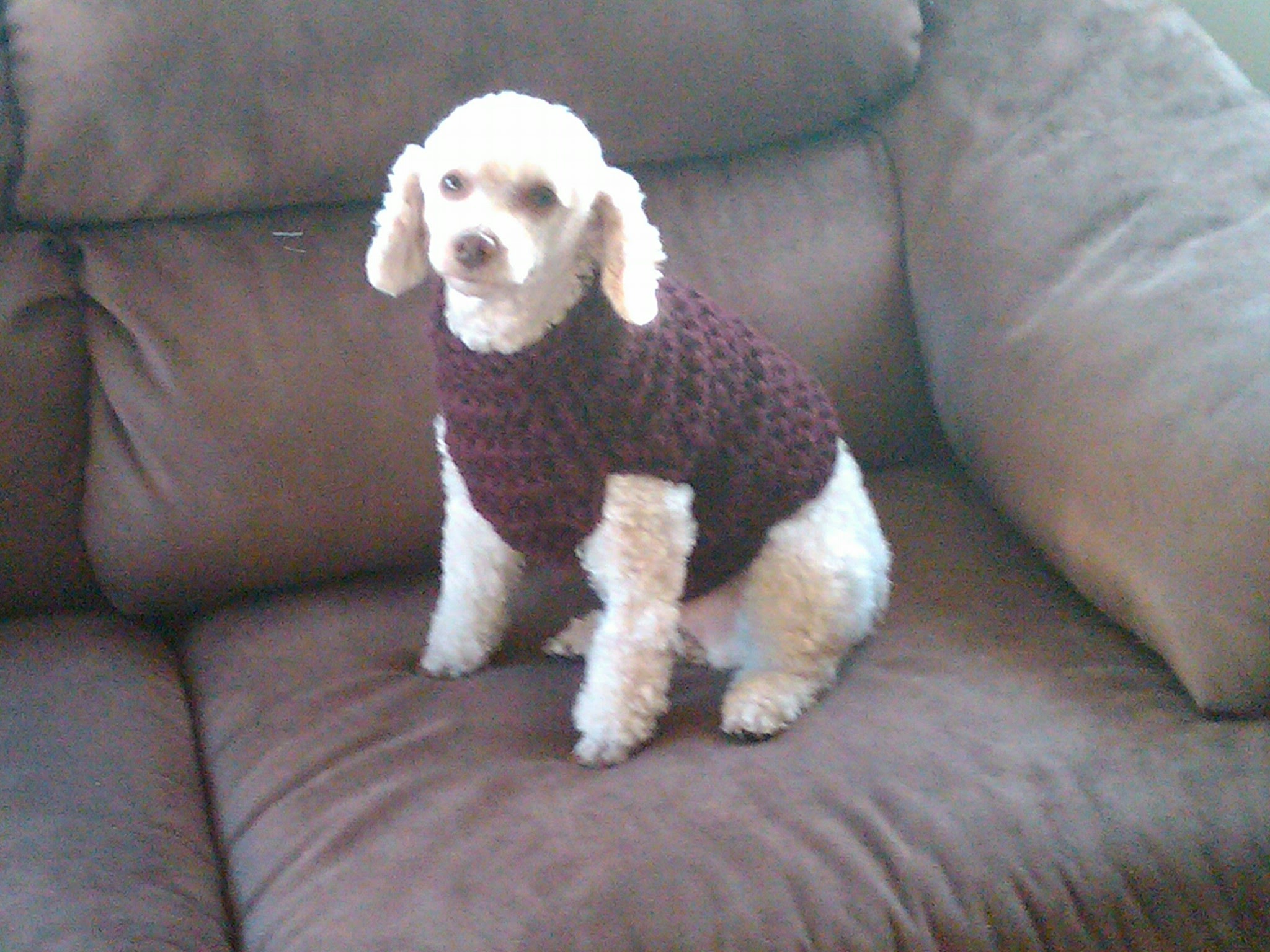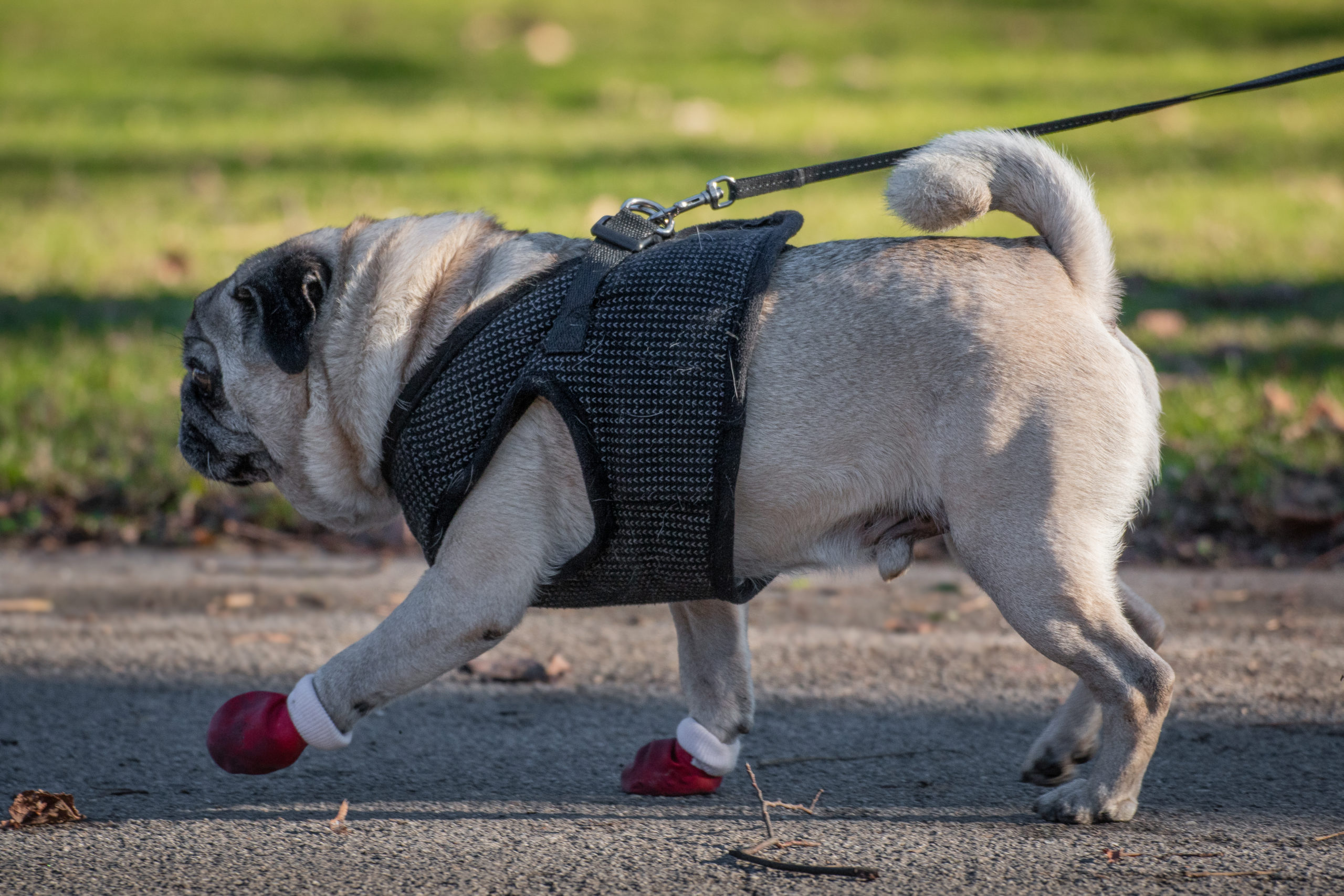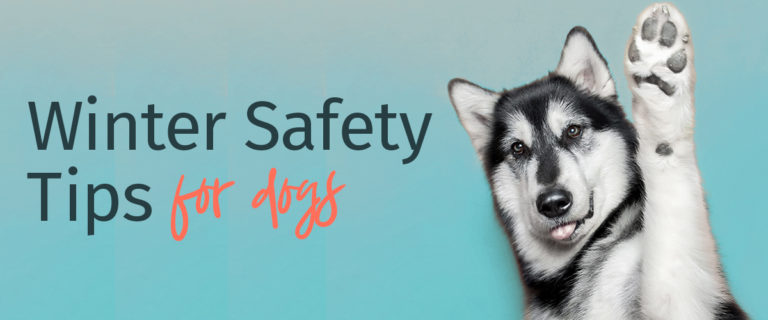Dogs are enthusiastic about EVERYTHING. While your pupper’s energy and enthusiasm are some of their best qualities, these traits can be dangerous when it comes to winter activities. As your dog’s person, it’s up to us to practice winter safety tips for dogs while having fun in the snow.
Animal Cruelty Laws
We'd like to quickly mention one thing before we get into dog winter safety tips. Increasingly, American states and UK and Canadian jurisdictions are passing laws that make it illegal to leave pets outdoors in extremely hot or cold weather. A great rule of paw is if you're uncomfortable outside, your furbaby is too. Unattended vehicles are also unsafe as they simulate refrigerators or greenhouses and get way too cold or too hot quickly.
Winter Safety Tip #1: Signs Your Dog Has Been Outside Too Long
According to the Oxford Dictionary, hypothermia is a medical condition where one has abnormally low body temperature, typically one that is dangerously low. Humans' best friend's normal temperature is between 101 and 102.5 degrees Fahrenheit (F) or 38.3 to 39.2 degrees Celsius (C). Anything below 35C and 99F is hypothermic. However, before hypothermia sets in there are warning signs:
- Limping. If your dog's paws are unprotected, and the ground is colder than the air, your canine will get chilled faster. When your dog starts to limp, they are trying to tell you that their paws are too cold.
- Whining. When dogs become uncomfortable due to the cold, they will attempt to let you know. They might whine, whimper or bark.
- Cold Ears. Even when dogs are frozen, their body may feel warm to the touch due to fur. If you don't know how to tell if your dog is cold or you're unsure if they are, check their ears. If their ears feel cold, particularly around the edges, it is time to bring your dog inside.
- Shivering. Dogs show a visible reaction to the cold. If your dog is shaking or trembling, they are likely too cold to be outside. Excessive shaking is another way your dog shows signs that they may be too cold.
To help you keep your canine safe, here’s a fantastic graphic from Petplan.com.

Winter Safety Tip #2: Dog Hypothermia Symptoms
We hope your doggo never gets hypothermic, but here are symptoms you need to watch for. If you see your dog exhibiting these symptoms, get them to your trusted vet immediately!
- Intense shivering
- Stiff muscles
- Poor coordination or stumbling
- Listlessness or lethargy
- Pale or grey gums
- Pale skin
- Dilated or fixed pupils
- Lowered heart rate and breathing rate
- Collapsing
Winter Safety Tip #3: Hypothermia Prevention
Obviously, the easiest way to do this is to keep your furbaby inside. Still, like we stated earlier, most dogs really love winter. Even my Abominable Snow Poodle, Zach, enjoyed two winters in Winnipeg, Canada. Average winter temps were -40 C and F! Unfortunately, I couldn't take him and his BFF Lexie Loo for regular walks due to the salt on the roads (more on that in Tip #4). Thanks to our pawsome pet sitter, Auntie Heather, they had a safe and fun time outdoors. Heather taught us how to make racetracks in the backyard for them in the deep snow. Additionally, Zach and Lexie were dressed in their super warm dog sweaters and coats covering their necks to their tails' bases. Finally, they only stayed outside for 10 minutes, tops, with hooman supervision.

📷: Jessica Sullivan
Now the difference between Zach and Lexie was their breeds and natural coats. Poodles' fur grows and requires regular grooming, while Lexie was a Pug Mix and maintained the same coat throughout the year. However, Zach's curly hair matted without regular brushing and grooming every eight weeks. Also, it definitely was not thick enough for him to be outside in winter without his fleece outerwear.
Conversely, our sweet boy Max was a Golden Retriever Mix and had SUPER thick fur and loved laying in the snow. If we had put a coat on him for Colorado winters, he would have been too warm. Therefore, if you have a dog with thick fur, do not get them shaved in winter to help them maintain their body temperature.
Once it’s time to bring your canine inside, make sure you remove their wet outerwear and have towels ready to dry off their paws and body.
Winter Safety Tip #4: Protecting Their Paws
The easiest way to protect paws is by wearing dog booties. Some dogs like them better than others, and a great way to work up to wearing actual booties is to try putting socks on their feet first. If they tolerate the socks, then there is a good chance they will like booties!

No matter what, dog paws need to be checked frequently in winter for everything from cold weather injuries to chemical burns on their feet. Recently, on the Next Door app, a helpful neighbor posted about using pet-friendly salt to keep sidewalks clear. Unfortunately, some neighbors used salt, and her dogs' paws were injured from the chemicals. It’s also important to know that the ice melt can irritate their tummies as well.
Unfortunately, no ice melt is 100% safe, and they definitely should not be ingested! Before the walk, apply paw wax to protect the paws. During the walk, do not let your pupper lick their paws. If you notice they're licking their paws during the walk, the ice melt is injuring their feet, and you need to get them home as quickly as possible. When you get home, make sure to check for ice and snow buildup. Finally, wash and dry their paws after each walk.
While we know for some of you, winter is drawing quickly to a close, for the rest of us, Do You Want to Build a Snowman keeps popping into our heads. We hope these winter safety tips for dogs were helpful. We’d also love to hear if you have other useful tricks to keep your dog safe and happy in the winter; please post them on our socials or email hoomans@smallpetselect.com.
DISCLAIMER: These links are being provided as a convenience and for informational purposes only; they do not constitute an endorsement or an approval by Small Pet Select of any of the products, services or opinions of the corporation or organization or individual.







